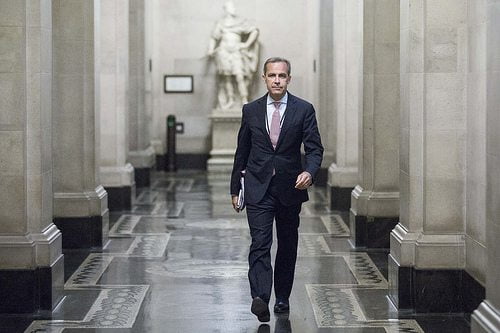

Economy
Why peer-to-peer lending should be part of Mark Carney’s plans
The governor of the Bank of England Mark Carney recently unveiled new plans to get banks lending to businesses again. But is turning to the same old suspects really the right approach to finance the real economy? Alternatives like peer-to-peer lending not only offer access to exciting new sources of money, but will help us avoid the mistakes of the past, too.
The flow of finance to small businesses in the UK is finally on the up, the Independent reported last week. But before the fanfare sounds, let’s put this in context. The reason for the rise, according to market research firm BDRC, is not that banks are lending more but because of increased use of other forms of finance like loans from company directors.
In other words, despite high profile government initiatives like the Funding for Lending scheme, our big financial institutions are still holding back from lending to the real economy.
This is the context for the Bank of England’s latest plan to tackle the issue, unveiled by Mark Carney earlier this month in his maiden speech as governor. The Bank estimates that by relaxing liquidity requirements for country’s biggest banks and building societies, up to £90 billion of lending potential could be unleashed.
A good thing, surely? Well, yes and no. Whilst few would contest the ends (an adequate flow of cash to businesses is a critical component of a healthy economy investing in its future), some big questions can be asked about the means. In particular, are banks and building societies really the right institutions to be targeting? And are there not alternative approaches which might better deliver credit to the real economy?
Carney’s business lending plan
The core of the Bank of England’s proposal is to increase the supply of money flowing to businesses from the UK’s eight big banks and building societies by easing the liquidity requirements that regulators imposed after the 2008 financial crisis.
Currently, banks like Barclays have ‘highly liquid assets’ – i.e. those that can very quickly be turned into cash – with a total value that exceeds 100% of their net cash outflows over a month. This buffer is intended to ensure the resilience of the banking system. It means that in the event of credit drying up, like it did during the credit crunch, bank operations could continue for long enough for other interventions to take effect. But this minimum liquidity ratio will now be reduced to 80% (for institutions that meet other capital requirements), with the difference available for lending.
Repeating past mistakes?
A problem with this plan, however, is that it ignores the systemic risk posed by an over reliance on a handful of large institutions. In this sense at least, it appears not to offer a substantially different approach to the one that led to the 2008 financial crisis.
Back then, it was over exposure to massive amounts of bad debt like US sub-prime mortgages that first got the banks into trouble. When the scale of the problem finally dawned, only government bailouts were able to save banks that were “too big to fail” and ensure the survival of the other socially essential functions they provided. In the meantime, lending to the real economy came to a grinding halt, turning a financial crisis into a full blown recession.
In the future, a comparable risk could exist should most lending continue to be funnelled through just a few banks and building societies. In this scenario, much of the fall out from large unforeseen default events would be focussed on these organisations. In other words, a lot of risk would be sitting in one place should things go wrong.
And whilst new capital requirements are designed to strengthen the ability of institutions to withstand such shocks, they will not be infallible. Indeed, the Basel III international agreement on these standards was watered down earlier this year.
Peer-to-peer alternatives
An alternative approach to rejuvenating business lending has already established itself in the form of peer-to-peer lending, which allows individuals to directly lend via online platforms. Examples include Funding Circle, and Zopa (which has only recently branched out into business lending), which have already raised hundreds of millions of pounds over the last few years.
By cutting out the middle man (the bank), peer-to-peer lending means that a potentially vast number of lenders each makes their own small ‘risk decisions’ about where to best place their money, rather than one large institution. Should borrowers default, individual lenders will be negatively affected, but the odds of a broader systemic problem requiring state intervention is reduced.
Of course this leads to the question of whether individual lenders are able to adequately assess the risk involved when making investment decisions for themselves, with some arguing that for all their faults, intermediaries such as banks are still better placed than individuals to fulfil this role.
But the reality is that many peer-to-peer platforms use the same (or better) credit scoring procedures as banks before publicising lending opportunities, and the evidence to date suggests that peer-to-peer lenders make as good if not better decisions than traditional institutions. Zopa, for example, has a rate of bad debt that runs at less than 0.2% of money lent, well below average.
In any case, for the near future at least it’s not a binary choice. We need our banks and building societies to step up to the mark and support small and medium sized businesses. But we also need fresh approaches like peer-to-peer lending which not only open up new sources of finance, but help reduce systemic risk too.
Sam Friggens is a writer for renewable energy funding platform Abundance Generation. You can follow him on Twitter: @Sam_Friggens. This article originally appeared on Abundance’s blog.
Further reading:
‘Growing confidence in alternative finance’ as ethical lending grows
Mark Carney: finance that becomes disconnected from the economy is ‘useless’
Banking regulator outlines massive shortfall at big banks
Bruce Davis, Abundance: ‘we can do something different with money’
Bank of England: interest rates to remain low until unemployment drops


 Environment11 months ago
Environment11 months agoAre Polymer Banknotes: an Eco-Friendly Trend or a Groundswell?

 Environment12 months ago
Environment12 months agoEco-Friendly Home Improvements: Top 7 Upgrades for 2025

 Features9 months ago
Features9 months agoEco-Friendly Cryptocurrencies: Sustainable Investment Choices

 Features11 months ago
Features11 months agoEco-Friendly Crypto Traders Must Find the Right Exchange


























